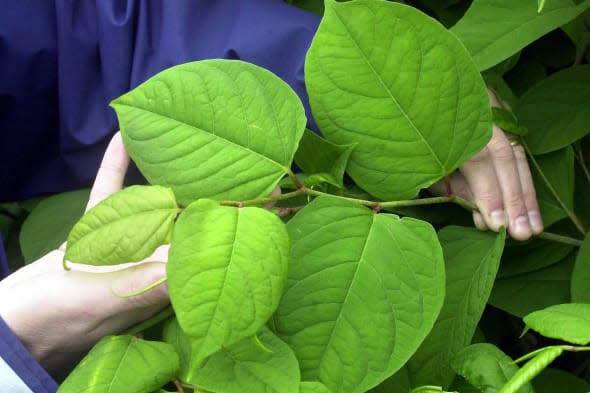Japanese knotweed could land you with an ASBO

People who fail to tackle invasive plants like Japanese knotweed could be slapped with a community protection notice and fined up to £2,500.
The Home Office has issued a briefing document on the new-style ASBOs that describes how they can be used against negligent homeowners.
"The notice can be used to require someone to control or prevent the growth of Japanese knotweed or other plants that are capable of causing serious problems to communities," it reads.
"The notice can place restrictions on a person's behaviour (in the case of an individual, as long as they are aged 16 or over) and, if necessary, force them to take steps to rectify the behaviour that is having a detrimental effect on the quality of life of the community."
Other plants that could fall foul of the legislation include Himalayan balsam and giant hogweed. Fines could reach £2,500 for individuals, and £20,000 for companies, who persistently fail to deal with the problem.
Article continues below

There's no doubt that Japanese knotweed, introduced to the UK by the Victorians for its attractive flowers and foliage, represents a serious menace. It can as grow as fast as a foot a week, destroying paving and brickwork, and has been estimated to cause £170 million of damage to buildings every year.
One couple was forced to knock their house down because of an infestation in 2011, and many others have seen house sales fall through. And it affects nearby properties too, with one Stockport homeowner being told last year that knotweed on neighbouring council land had knocked 20% off the value of his home.
But dealing with these plants is by no means easy, and anyone receiving a community protection notice can expect close scrutiny to make sure they get it right.
The Department for Environment, Food & Rural Affairs recommends treatment with herbicide - although this usually takes at least three years. Alternatively, plants can be dug up and burned, but again this isn't easy: for Japanese knotweed, it means digging out soil to a depth of more than four metres and for seven metres around.
There is some hope: recent trials of a natural enemy, a tiny mite called Aphalara itadori, have shown very promising results. However, eliminating the plant this way could take decades or more. In the meantime, gardeners should keep a sharp eye out for the plant's fleshy red shoots next spring - and do their best to get rid of them before the neighbours complain.
Is a fine or ASBO too severe? Remember, the plant can cause a lot of damage! Let us know your thoughts on Facebook
Read more about Japanese knotweed on AOL Money:
Japanese knotweed: the plant that could cost you your home
Japanese knotweed invasion destroys half property's value
Could a tiny mite mark the end for Japanese knotweed?



